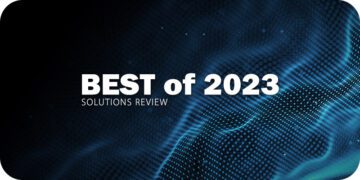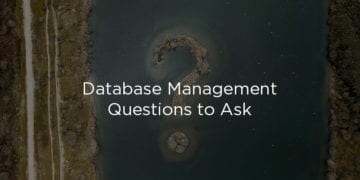Solutions Review editors created this short resource highlighting the most common data governance myths to stand clear of.
In today’s data-driven world, data governance has become a crucial aspect of managing and protecting valuable information. However, with the growing importance of data governance, numerous myths and misconceptions have emerged, causing confusion and hindering organizations from implementing effective data governance strategies. In this article, we aim to debunk some of the greatest data governance myths, shedding light on the truth behind these misconceptions and providing actionable insights for businesses.
Data Governance Myths
Myth 1: Data Governance is Solely an IT Responsibility
One prevailing myth surrounding data governance is that it falls solely within the purview of the IT department. In reality, effective data governance requires a collaborative effort involving multiple stakeholders across the organization. While IT plays a crucial role in implementing technical controls and ensuring data security, data governance must involve participation from business leaders, data owners, data stewards, and compliance professionals. A comprehensive data governance framework involves defining data policies, establishing accountability, and aligning data management with business objectives.
Myth 2: Data Governance Hampers Data Accessibility
Another common misconception is that data governance stifles data accessibility, making it difficult for employees to access and utilize data when needed. In fact, data governance aims to strike a balance between accessibility and security. By implementing robust data governance practices, organizations can ensure that data is accessible to authorized personnel while safeguarding it against unauthorized access and misuse. Effective data governance frameworks establish data access controls, define data usage policies, and enable data discovery tools to empower employees with the right data at the right time.
Myth 3: Data Governance is a One-Time Project
Data governance is often mistaken as a one-time project with a definite endpoint. However, data governance is an ongoing process that requires continuous monitoring, assessment, and improvement. It involves establishing data quality standards, implementing data cleansing procedures, and regularly auditing data assets for compliance. Data governance frameworks must evolve with changing business needs, technological advancements, and regulatory requirements. By treating data governance as a continuous effort, organizations can ensure the integrity, accuracy, and reliability of their data assets over time.
Myth 4: Data Governance is Only Relevant for Large Organizations
Some small and medium-sized enterprises (SMEs) believe that data governance is a luxury reserved for large corporations with vast amounts of data. However, data governance is equally crucial for SMEs, as they also handle sensitive customer information, financial records, and proprietary data. Implementing appropriate data governance practices can help SMEs mitigate risks, comply with data protection regulations, and gain a competitive advantage. A tailored data governance strategy that aligns with the size and scope of the organization can provide SMEs with the necessary structure to effectively manage their data assets.
Myth 5: Data Governance is an Expense, Not an Investment
One of the most prevalent myths surrounding data governance is that it is merely an expense without any tangible return on investment (ROI). However, data governance should be viewed as a strategic investment rather than an operational cost. By implementing robust data governance practices, organizations can enhance data quality, improve decision-making processes, increase operational efficiency, and reduce the risk of data breaches or regulatory non-compliance. A well-implemented data governance framework can lead to significant cost savings, increased customer trust, and improved business outcomes.
Final Thoughts
Data governance is an integral component of modern organizations’ data management strategies. By dispelling these prevalent myths, organizations can approach data governance with a clearer understanding of its significance and benefits. It is crucial to recognize that data governance is a collaborative effort involving stakeholders across the organization, that it enables data accessibility without compromising security, and that it requires ongoing commitment and adaptation. Regardless of the organization’s size, investing in data governance is a strategic decision that yields long-term benefits, empowering businesses to effectively leverage their data assets, drive informed decision-making, and maintain a competitive edge in the digital landscape.
As organizations continue to grapple with the challenges of managing and protecting data, debunking these data governance myths becomes increasingly important. By adopting a holistic and informed approach to data governance, businesses can unlock the true potential of their data while ensuring compliance, mitigating risks, and fostering a culture of data-driven innovation.
Data governance is not a mere buzzword or a set of rigid rules. It is a strategic practice that empowers organizations to harness the value of their data, optimize operations, and gain a competitive advantage. By dispelling common data governance myths, businesses can make informed decisions and implement effective data governance frameworks that align with their specific needs and objectives. In this data-rich era, embracing data governance is not a choice but a necessity for organizations aiming to thrive in the digital landscape.
- The 5 Greatest Data Lake Myths and How to Avoid Them - June 30, 2023
- The 5 Greatest Master Data Management Myths and How to Avoid Them - June 30, 2023
- The 5 Greatest Metadata Management Myths and How to Avoid Them - June 30, 2023





